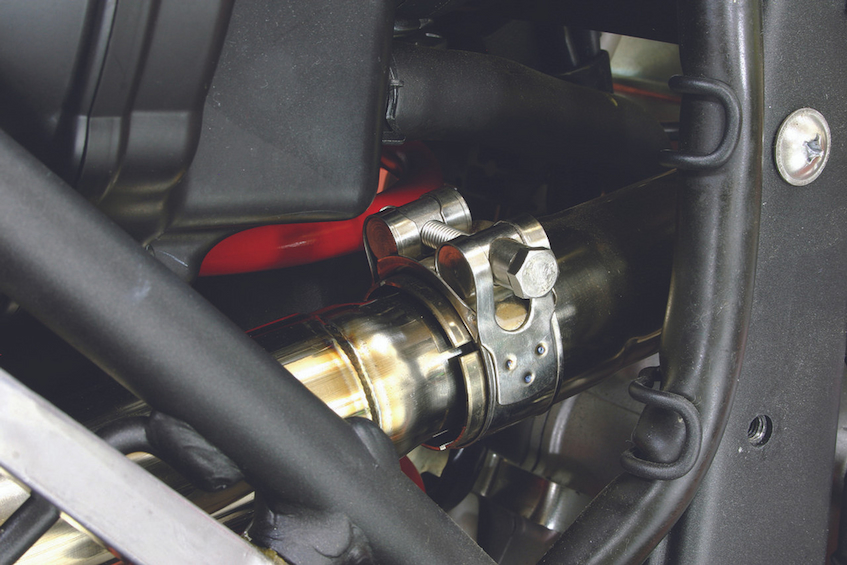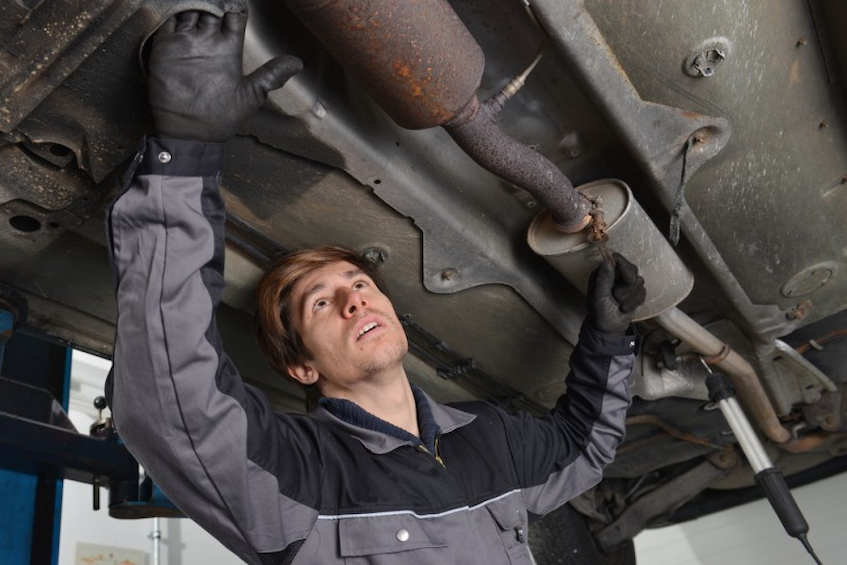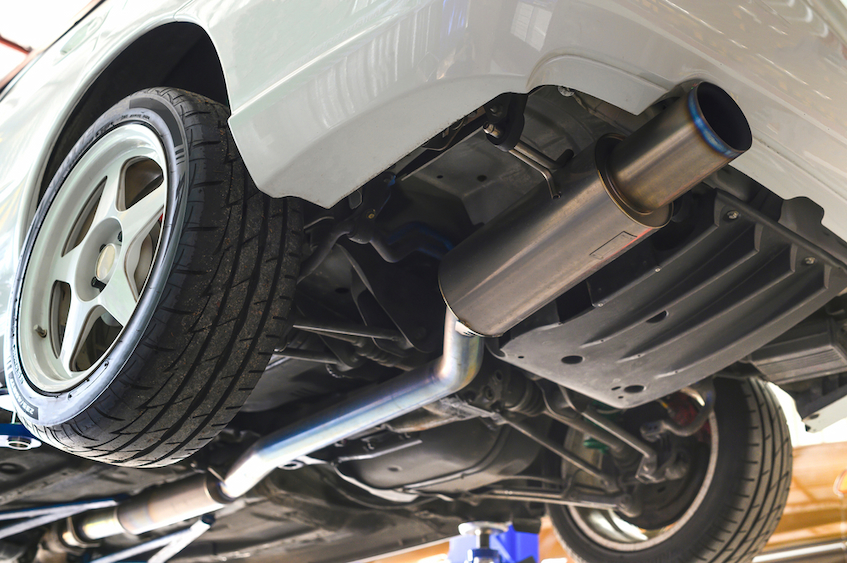Vehicle owners are sometimes surprised to find that after replacing a slip-fit muffler, or following a major butt-fitting exhaust upgrade that they would still need additional hardware to get the system to fit together. Maybe the OD diameter on the inlet side of your new muffler is larger than expected, or there’s unwanted slippage that’s preventing your new pipes from staying together. There could be any number of reasons that your pipes need to be coerced into staying joined, and they all mean that you’re going to need exhaust clamps.
Let’s be honest, though: there’s nothing especially ground-breaking, or prone to changing about exhaust clamps. What has changed, however, is our understanding of what exhaust systems need to make an engine perform more efficiently. That means in spite of their yawningly utilitarian nature, exhaust clamps also need to do their job more efficiently; that’s why you need to understand the differences between them.
Sealing in Performance with Precision Slip-Fit Exhaust Clamps

It’s a fact: whether it’s increasing output or fuel efficiency, or decreasing noise or CO2 emissions, the expectations on today’s exhaust systems are higher than ever. They need to perform better, and properly sized and selected car muffler clamp assemblies are an essential part of that performance.
It’s important to remember that the vacuum created by a sealed exhaust system is responsible for your engine’s ability to rid itself of spent gases. This “scavenging” effect, however, isn’t the only reason you’d want to be sure that all of your system’s pipes are properly sealed and free from gaps. Unlike systems with electronic cutouts or exhaust brakes where the sealing can be regulated, exhaust leaks from an inadequate seal can lead to a host of problems, including:
- A significant drop in performance and responsiveness, especially if it’s ahead of the O2 sensor;
- Excessive noise and rattling, together with a noticeable drop in fuel economy; and,
- An increase in emissions, with the potential for exhaust gas to enter the passenger compartment.
Make no mistake: exhaust and muffler clamps have traditionally been standard-sized, and largely undifferentiated items. However, the ballooning mix of engine configurations, combined with tightening emissions requirements, and growing assortments of noise and heat shieldings, have all contributed to the need for clamps to become more specialized. Ultimately, that means whenever you’re replacing exhaust components, especially worn ones, you can’t just reach into your toolbox anymore and slide on the first exhaust clamp you touch. You have to use precise, corrosion resistant replacement exhaust pipe clamps that are made specifically for your application; that’s the only way to ensure a tight, stable joint between your pipes that you can trust.
Premium Exhaust Clamp Types For Mufflers, Tubes, and Turbochargers
While the number of welded, and direct-fit exhaust systems is relative limited, there are literally hundreds of different types of slip- and butt-fit exhaust configurations sold in Australia. There are, however, only 4 basic types of car exhaust pipe clamps that are used on any of them.
- Classic saddle clamps. Economic, 2-piece saddle clamps, commonly known as U-bolt clamps, are the standard mild, or stainless steel clamp that rely on a combination threaded-end pressed rod with a folded saddle to squeeze larger OD diameter pipes around smaller OD diameter pipe.
- Narrow and wide band clamps. This type of stainless steel exhaust band clamp is ordinarily used on slotted, machine-fit stainless steel exhaust systems, is ideal for applying even pressure around the full circumference of a joint, and preferred for systems that can be easily taken apart and the clamp reused.
- Thin-built tube band clamps. These clamps are similar to narrrow band clamps, but are made from a thinner gauge stainless steel that allows them to form fit around either slip-fit or butt-fit joints, making them difficult to reuse without experiencing some form of clamp exhaust leakage.
- Super-sealing V-band clamps. These high-end, high-sealing clamps are used mainly with high pressure exhaust applications like turbocharging, and consist of 2 adjoining flanges that are welded into position at the pipe joint, and then further tightened down with a wedge clamp.
The type of exhaust pipe clamp that you would use on your system isn’t just determined by the style of fit, the material, or the size of tubing, though. A premium quality car exhaust clamp is no small investment, so you not only have to consider whether, in addition to it’s reusability, it also satisfies a wider range of material and operational qualities.
Superior Clamp Qualities That Equate to Long Lasting Reliability

No matter if you’re making repairs to an ordinary mild steel exhaust, or you’re mounting a custom titanium street / strip system with headers, there are 3 main qualities you need to look for in every new exhaust and muffler clamp assembly.
- Uncompromised durability. Because of their exposure to corrosive gases and moisture, lengthy heat cycles, and constant movement, only muffler clamps made from corrosion resistant materials, and featuring stainless steel exteriors are tough enough for the Australian climate.
- Superior sealing capacity. Premium quality replacement exhaust and muffler clamp assemblies have to be able to provide a seal that’s stable enough to prevent scavenging losses, unwanted drops in fuel economy, and unwanted (and potentially defectable) increased in noise and gas emissions.
- Ease of maintenance. Mufflers, resonators, and tail pipe assemblies all need to be replaced every few years, and your clamps should be easy to remove while minimising the risk of unnecessary damage to pipes and components that don’t need to be changed.
Instead of mere pipe supporting accessories, lightweight, modern exhaust clamps for sale are as integral to a system’s reliability as any section of tubing. And as with most types of high performance clamps, exhaust clamps come in a range of styles and sizes that are designed especially for the most unique operations.
The Final Word
At the end of the day, while there’s no shortage of discussions about the benefits of high performance exhaust systems, they’re incomplete unless you’re also covering the clamps that hold them together. Slip-fit and butt-fit systems are only as good as how well they’re sealed; that’s why you can’t afford to leave your choice of clamps to chance.
With the proper selection of muffler clamp assemblies, you can be sure that your exhaust system is built to deliver everything it’s designed to. They’re some of the most uncomplicated hardware on your vehicle, but the job they do is irreplaceable.


